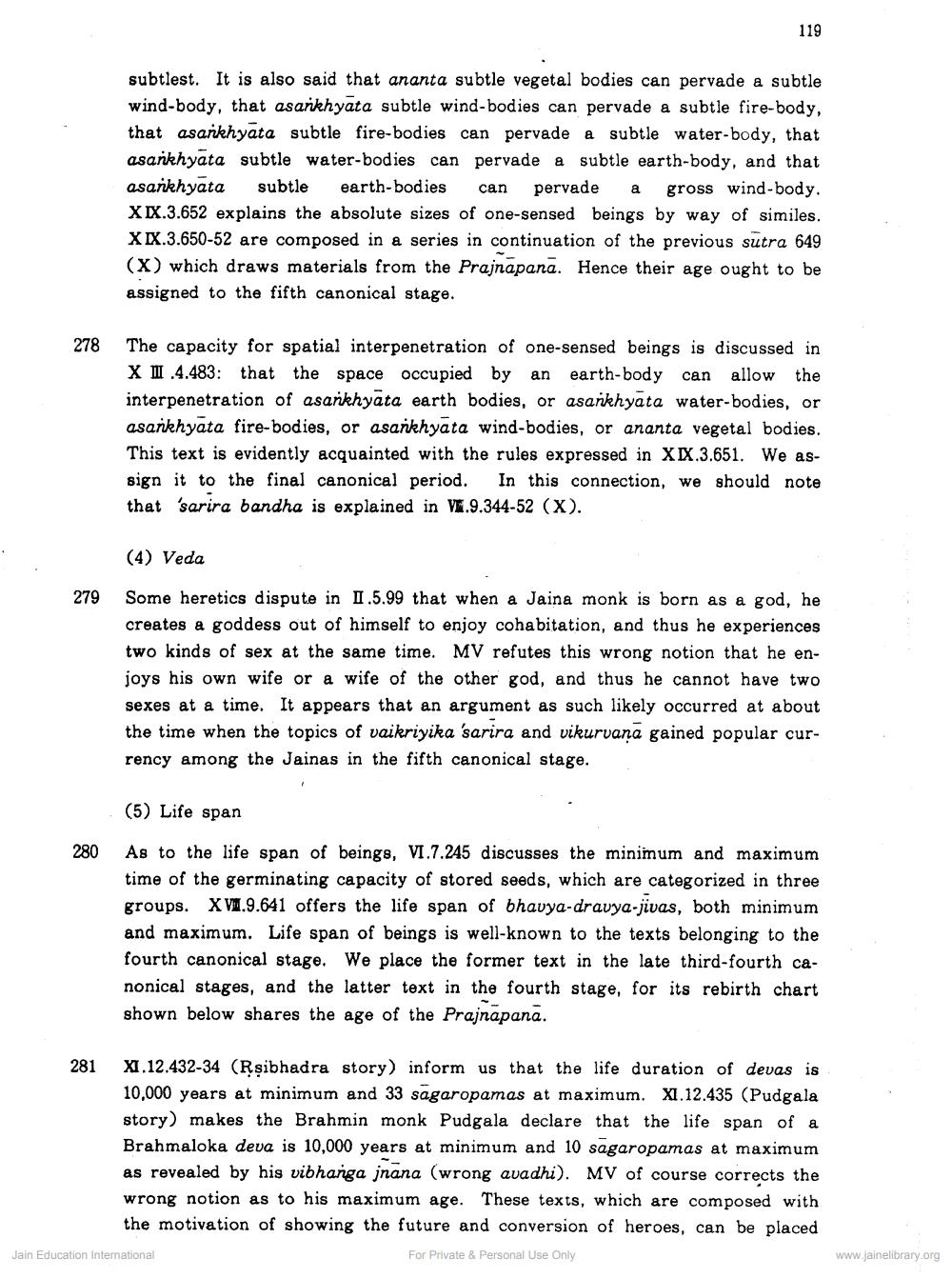________________
119
subtlest. It is also said that ananta subtle vegetal bodies can pervade a subtle wind-body, that asankhyāta subtle wind-bodies can pervade a subtle fire-body, that asankhyata subtle fire-bodies can pervade a subtle water-body, that asankhyata subtle water-bodies can pervade a subtle earth-body, and that asankhyata subtle earth-bodies can pervade a gross wind-body. X IX.3.652 explains the absolute sizes of one-sensed beings by way of similes. XIX.3.650-52 are composed in a series in continuation of the previous sutra 649 (X) which draws materials from the Prajnapana. Hence their age ought to be assigned to the fifth canonical stage.
278
The capacity for spatial interpenetration of one-sensed beings is discussed in XII.4.483: that the space occupied by an earth-body can allow the interpenetration of asankhyata earth bodies, or asankhyata water-bodies, or asankhyāta fire-bodies, or asankhyata wind-bodies, or ananta vegetal bodies. This text is evidently acquainted with the rules expressed in XIX.3.651. We assign it to the final canonical period. In this connection, we should note that 'sarira bandha is explained in V6.9.344-52 (X).
(4) Veda
279
Some heretics dispute in 1.5.99 that when a Jaina monk is born as a god, he creates a goddess out of himself to enjoy cohabitation, and thus he experiences two kinds of sex at the same time. MV refutes this wrong notion that he enjoys his own wife or a wife of the other god, and thus he cannot have two sexes at a time. It appears that an argument as such likely occurred at about the time when the topics of vaikriyika 'sarira and vikurvanā gained popular currency among the Jainas in the fifth canonical stage.
(5) Life span
280
As to the life span of beings, V1.7.245 discusses the miniinum and maximum time of the germinating capacity of stored seeds, which are categorized in three groups. X V1.9.641 offers the life span of bhavya-dravya-jivas, both minimum and maximum. Life span of beings is well-known to the texts belonging to the fourth canonical stage. We place the former text in the late third-fourth canonical stages, and the latter text in the fourth stage, for its rebirth chart shown below shares the age of the Prajnapanā.
281 X1.12.432-34 (Rsibhadra story) inform us that the life duration of devas is
10,000 years at minimum and 33 sagaropamas at maximum. XI.12.435 (Pudgala story) makes the Brahmin monk Pudgala declare that the life span of a Brahmaloka deva is 10,000 years at minimum and 10 sagaropamas at maximum as revealed by his vibhanga jnana (wrong avadhi). MV of course corrects the wrong notion as to his maximum age. These texts, which are composed with
the motivation of showing the future and conversion of heroes, can be placed Jain Education International
For Private & Personal Use Only
www.jainelibrary.org




